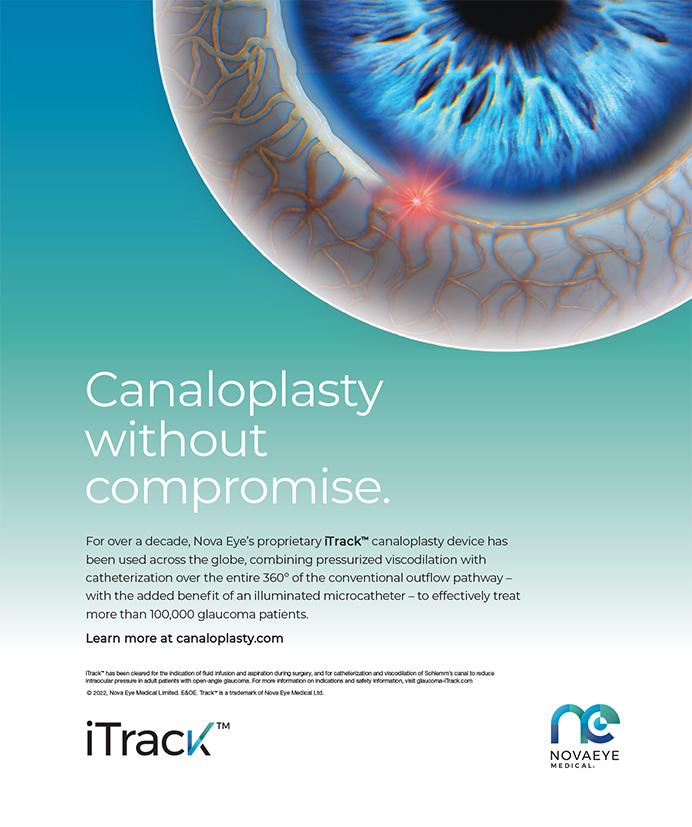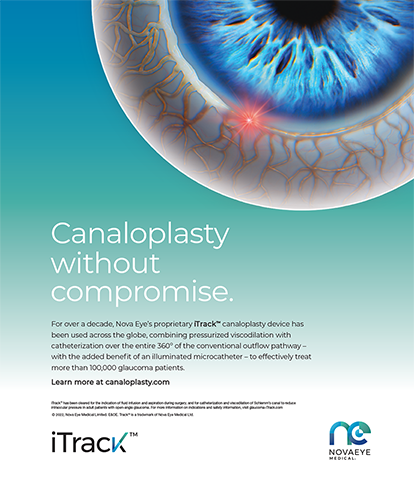The SmartIOL (formerly the SmartLens) is a thermodynamic, hydrophobic, acrylic, injectable, accommodating IOL manufactured by Medennium, Inc. (Irvine, CA). Its 9.5 by 3.5-mm optic has the same dimensions as the average human crystalline lens. The device is injectable through an incision of 3 mm or smaller.
Accommodative Theory
The SmartIOL was designed with consideration of the Helmholtz theory of accommodation, which states that the human crystalline lens loses flexibility and therefore accommodation with age. If it is correct, then replacing the aged, rigid lens with a full-sized, elastic, gel-like IOL would restore patients' accommodation. In fact, numerous tests have accomplished this feat using injectable polymers or balloons.1-5 Two of the most important studies independently demonstrated that refilling the capsular bag in monkeys restored accommodation.6,7
Properties of the Lens
The SmartIOL is composed of the first material that can both fill the capsular bag and also pass through a small incision and normal-sized capsulorhexis. To accomplish this, it can be converted into a 2-mm rigid rod at room temperature. Once inside the capsular bag, the lens will respond to the patient's body temperature to reconfigure to its original size and shape and the dioptic power with which it was imprinted during its initial construction.
The lens' flexibility and high refractive index provide for a large amplitude of accommodation. Because it is hydrophobic acrylic and entirely fills and adheres to the capsular bag, the SmartIOL leaves little room for cell migration and should therefore minimize if not avoid posterior capsular opacification. In addition, decentration and edge glare would be eliminated. Also, performing an Nd:YAG laser capsulotomy with this lens is theoretically possible because it is a stable gel, and the procedure would not extrude the lens into the capsular bag as in the case of a liquid polymer.
IMPLANTATION TECHNIQUE
To implant the SmartIOL, the surgeon inserts the rigid rod through the small incision and into the capsular bag. Inside the bag, the lens reconfigures to its original dimensions and dioptic power. A sideport instrument may aid in properly orientating the lens as it unfolds.
1. Kessler J. Refilling the rabbit lens. Further experiments. Arch Ophthalmol. 1966 Oct;76(4):596-598.
2. Nishi O, Hara T, Hara T, et al. Further development of experimental techniques for refilling the lens of animal eyes with a balloon. J Cataract Refract Surg. 1989;15:5:584-588.
3. Hettlich HJ, Lucke K, Kreiner CF. Light-induced endocapsular polymerization of injectable lens refilling materials. Ger J Ophthalmol. 1992;1:5:346-349.
4. Hettlich HJ, Lucke K, Asiyo-Vogel MN, Schulte M, Vogel A. Lens refilling and endocapsular polymerization of an injectable intraocular lens: in vitro and in vivo study of potential risks and benefits. J Cataract Refract Surg. 1994;20:2:115-123.
5. Haefliger E, Parel JM, Fantes F, et al. Accommodation of an endocapsular silicone lens (Phaco-Ersatz) in the nonhuman primate. Ophthalmology. 1987;94:5:471-477.
6. Haefliger E, Parel JM. Accommodation of an endocapsular silicone lens (Phaco-Ersatz) in the aging rhesus monkey. J Refract Corneal Surg. 1994;10:5:550-555.
7. Nishi O, Nakai Y, Yamada Y, Mizumoto Y. Amplitudes of accommodation of primate lenses refilled with two types of inflatable endocapsular balloons. Arch Ophthalmol. 1993;111:12:1677-1684.


